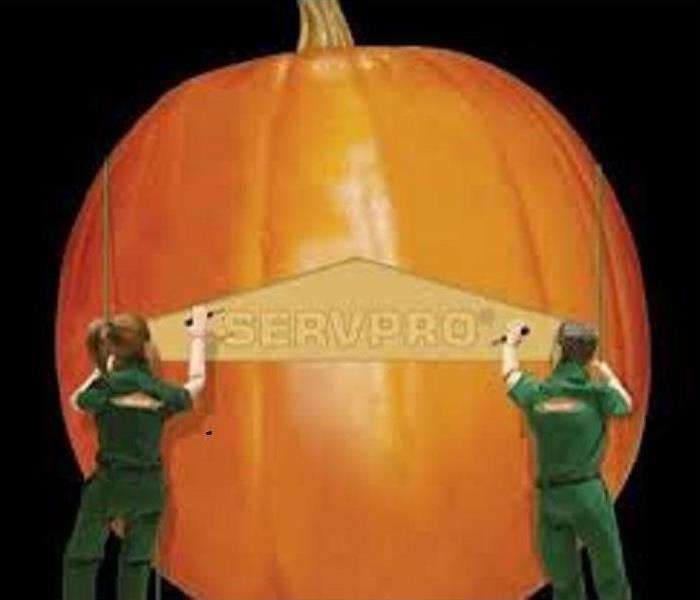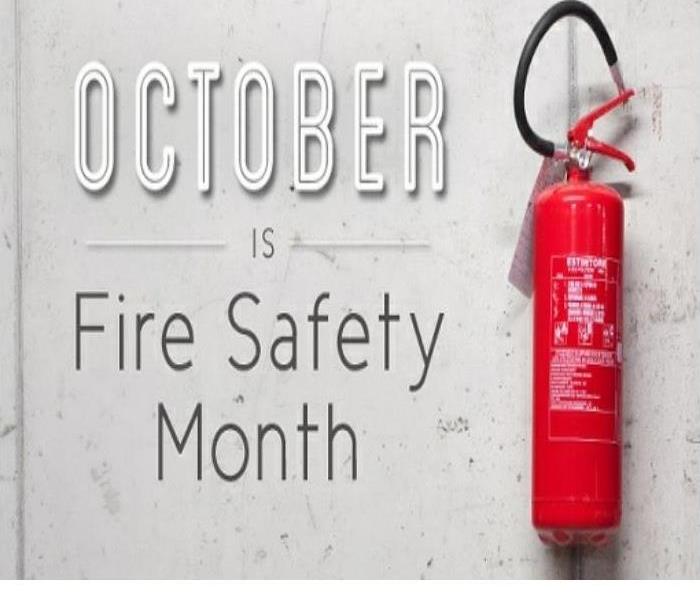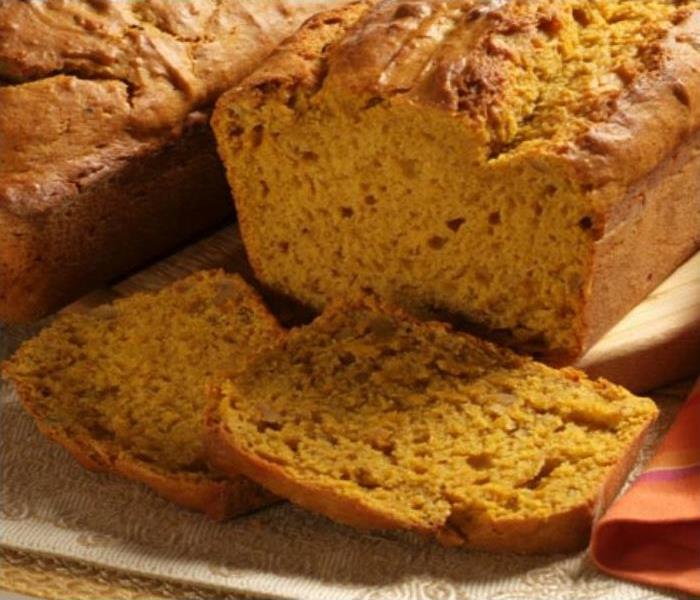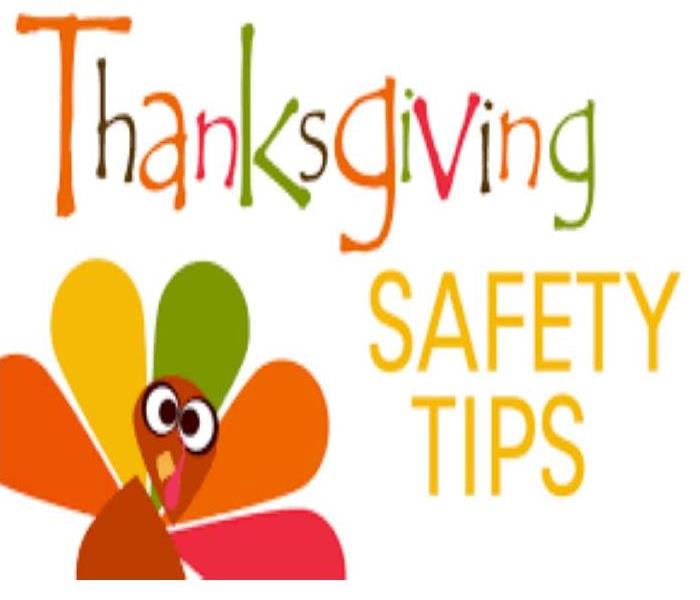Archived Community Blog Posts
Partnering with Everett Fire Department for a Safer Community
11/25/2024 (Permalink)
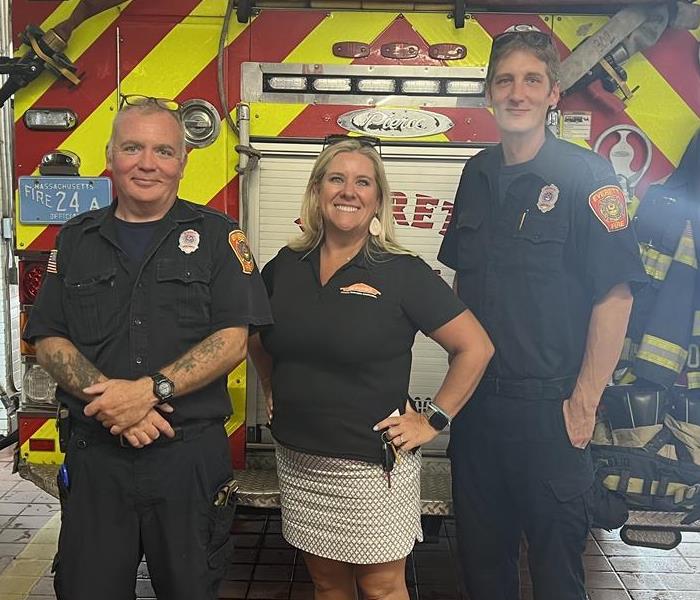 This photo highlights SERVPRO Team JRF’s commitment to supporting the Everett Fire Department and the community through partnership and preparedness.
This photo highlights SERVPRO Team JRF’s commitment to supporting the Everett Fire Department and the community through partnership and preparedness.
At SERVPRO® Team JRF, we are proud to support and collaborate with first responders like the Everett Fire Department, who dedicate themselves to protecting and serving our community. As leaders in disaster recovery and restoration, we share a common goal: ensuring safety and resilience in the face of emergencies.
Supporting Everett Fire Department’s Mission
The Everett Fire Department is on the front lines, responding to fires, medical emergencies, and hazardous situations every day. Their courage and commitment inspire us to do our part in disaster preparedness and recovery. At SERVPRO Team JRF, we recognize their efforts by providing the cleanup and restoration services needed after the fire trucks leave the scene. Whether it's smoke damage, water cleanup from fire suppression, or reconstruction, we are here to help the community rebuild after the unexpected.
Why Our Partnership Matters
When disasters strike, the aftermath can be overwhelming for property owners. With the Everett Fire Department's quick action and SERVPRO’s expertise in cleanup and restoration, we can minimize damage and restore peace of mind to families and businesses. Our team is equipped with state-of-the-art technology and proven techniques to ensure homes and workplaces are restored “Like it never even happened.”
Preparedness Is Key
In addition to response and recovery, we believe in the importance of fire prevention. SERVPRO Team JRF proudly supports Everett Fire Department’s efforts to educate the community about fire safety. From encouraging the use of smoke alarms to hosting fire prevention workshops, we aim to empower residents with knowledge that can save lives.
A Heartfelt Thanks
We want to extend our deepest gratitude to the Everett Fire Department for their unwavering commitment to protecting our community. It's an honor to work alongside such dedicated individuals who put their lives on the line every day. Together, we are stronger, and together, we make Everett a safer place to live, work, and thrive.
SERVPRO Team JRF Is Here for You
If you or someone you know experiences fire, water, or mold damage, don’t hesitate to reach out to SERVPRO Team JRF. We’re available 24/7 to support our community with fast and reliable restoration services. Call us or visit our website to learn more.
Thank you, Everett Fire Department, for being our community's heroes. We’re honored to stand beside you in service.
SERVPRO's Donation to the Greater Boston Food Bank: Supporting the Fight Against Hunger
10/22/2024 (Permalink)
 Happy to be a part of such an impact cause!
Happy to be a part of such an impact cause!
At SERVPRO, community involvement is at the heart of what we do. We’re not just committed to restoring homes and businesses after disasters—we’re also dedicated to helping those in need. That’s why we are proud to announce our recent $25,000 donation to the Greater Boston Food Bank (GBFB), contributing to their critical mission of ending hunger in our region.
Our team also had the honor of attending the Women Fighting Hunger breakfast, an event that shines a spotlight on the important work being done to address food insecurity and ensure that families across Greater Boston have access to nutritious meals.
Why We Support the Greater Boston Food Bank
The Greater Boston Food Bank is the largest hunger-relief organization in New England, distributing millions of healthy meals annually to those in need. The challenges of food insecurity affect countless families, and the GBFB plays an essential role in providing relief through its network of over 600 distribution partners, including food pantries, soup kitchens, and community meal programs.
At SERVPRO, we believe that no one should have to wonder where their next meal will come from, which is why we are proud to support the GBFB’s mission. By donating $25,000, we are helping to provide thousands of meals for local families, ensuring that our contribution makes a tangible impact on the lives of those who need it most.
Attending the Women Fighting Hunger Breakfast
In addition to our donation, our team was thrilled to attend the Women Fighting Hunger breakfast. This inspiring event brings together women leaders, community advocates, and hunger-relief champions to raise awareness and support for the GBFB’s efforts. The breakfast provided a unique opportunity for us to learn more about the growing issue of food insecurity and the innovative programs the GBFB is implementing to combat it.
The event highlighted the power of collective action—when businesses, individuals, and organizations come together to support a common cause, real change happens. We were honored to be part of a gathering that reinforced the message that fighting hunger is everyone’s responsibility.
Making an Impact Together
Our $25,000 donation is just one part of a larger effort to combat food insecurity in our community. But we know that every meal provided, every dollar donated, and every hand that helps, brings us one step closer to a future without hunger. We encourage other businesses and individuals to consider how they can support local food banks and make a difference in the fight against hunger.
How You Can Help
If you’re interested in joining the fight to end hunger in Greater Boston, there are several ways to get involved:
- Donate: Financial contributions of any size go a long way in providing food for those in need. A single dollar can help provide three meals.
- Volunteer: The GBFB relies on volunteers to help sort and distribute food to local families. Volunteering your time is a rewarding way to give back.
- Advocate: Spread awareness about food insecurity and encourage others to support organizations like the GBFB.
A Commitment to Our Community
At SERVPRO, we’re more than just a restoration company—we’re committed to being a positive force in the communities we serve. Whether it’s helping homeowners recover from disasters or partnering with organizations like the Greater Boston Food Bank, we believe in making a lasting impact.
Together, we can fight hunger and build stronger, healthier communities. We’re proud to support the Greater Boston Food Bank and look forward to continuing our partnership in the fight to end hunger.
Make a Candy Chute for Safer Pandemic Trick-or-Treating
10/22/2020 (Permalink)
 Halloween Chute made from PVC pipe/
Halloween Chute made from PVC pipe/
Even if you’re not the type to decorate the outside of your house for Halloween, this year’s must-have trick-or-treating accessory is a delivery mechanism that will allow you to limit contact with the ghouls and goblins who will be approaching your home: the candy chute. Here’s how they work, and how to make one of your own.
How to make a candy chute
In case it’s not clear based on the description, a candy chute is a descriptor for any hollow, tubular object that can be rigged up to facilitate a safer, physically distanced trick-or-treating experience. Here’s how it works: When treat-seekers approach your door on October 31 (or whenever the locally sanctioned day happens to be), instead of handing them pieces of candy or leaving out a giant bowl of (hopefully) individually wrapped treats for them to paw through, you can simply sends the sweets down the candy chute, where they will fall into the hands of the kiddos waiting at the other end, hopefully more than six feet away from you.
There are several different factors that come into play when designing your own candy chute, including the positioning of your front steps and the necessary inclines to facilitate rapid candy movement. Your mission is to find at least six feet of some variety of hollow tubing arrange it to deliver the candy from your doorstep to the trick-or-treaters quickly and reliably.
It may not even be October yet, but there’s already no shortage of instructions for candy chutes floating around incorporating materials ranging from PVC pipes, to vinyl gutters, to cardboard shipping tubes, to more elaborate setups, where the chute is incorporated into the overall Halloween decor.
https://lifehacker.com/make-a-candy-chute-for-safer-pandemic-trick-or-treating-1845229874
Tips for a Safe and Fun Halloween!
10/18/2019 (Permalink)
 Happy Halloween from your friends at SERVPRO of Medford/Everett!
Happy Halloween from your friends at SERVPRO of Medford/Everett!
Trick-or-Treaters
- Be bright at night – wear retro-reflective tape on costumes and treat buckets to improve visibility to motorists and others.
- Wear disguises that don’t obstruct vision and avoid facemasks. Instead, use nontoxic face paint. Also, watch the length of billowy costumes to help avoid tripping.
- Ensure any props are flexible and blunt-tipped to avoid injury from tripping or horseplay.
- Carry a flashlight containing fresh batteries and place it face down in the treat bucket to free up one hand. Never shine it into the eyes of oncoming drivers.
- Stay on sidewalks and avoid walking in streets if possible.
- If there are no sidewalks, walk on the left side of the road, facing traffic.
- Look both ways and listen for traffic before crossing the street.
- Cross streets only at the corner, and never cross between parked vehicles or mid-block.
- Trick-or-treat in a group if someone older cannot go with you.
- Tell your parents where you are going.
Parents
- Ensure an adult or older, responsible youth is available to supervise children under age 12.
- Plan and discuss the route your trick-or-treaters will follow.
- Instruct children to travel only in familiar areas and along established routes.
- Teach children to stop only at well-lit houses and to never to enter a stranger’s home or garage.
- Establish a time for children to return home.
- Tell children not to eat any treats until they get home.
- Review trick-or-treating safety precautions, including pedestrian and traffic safety rules.
- Make sure Halloween costumes are flame-retardant and visible with retro-reflective material.
Motorists
- Slow down in residential neighborhoods and obey all traffic signs and signals. Drive at least 5 mph below the posted speed limit to give yourself extra time to react to children who may dart into the street.
- Watch for children walking on roadways, medians and curbs. In dark costumes, they’ll be harder to see at night.
- Look for children crossing the street. They may not be paying attention to traffic and cross the street mid-block or between parked cars.
- Carefully enter and exit driveways and alleys.
- Turn on your headlights to make yourself more visible – even in the daylight.
- Broaden your scanning by looking for children left and right into yards and front porches.
16 Pumpkin Facts That'll Make You Say "Oh My Gourd"
10/12/2018 (Permalink)
- The word "pumpkin" showed up for the first time in the fairy tale Cinderella.
A French explorer in 1584 first called them "gros melons," which was translated into English as "pompions," according to history. It wasn't until the 17th century that they were first referred to as pumpkins.
- The original jack-o'-lanterns were made withturnips and potatoes by the Irish.
In England, they used large beets and lit them with embers to ward off evil spirits. Irish immigrants brought their customs to America, but found that pumpkins were much easier to carve.
- Pumpkins are grown on every continent except Antarctica.
Which makes quite a bit of sense considering, oh you know, Antarctica is a 24/7 icy tundra.
- Over 1.5 billion pounds of pumpkin are produced each year in the United States.
The top pumpkin producing states are Illinois, Indiana, Ohio, Pennsylvania, and California.
- Morton, Illinois, calls itself the "Pumpkin Capital of the World"
According to the University of Illinois, 95% of the pumpkins grown in the U.S. are harvested in Illinois soil. Morton is allegedly responsible for 80% of the world's canned pumpkin production.
- 80% of the U.S.'s pumpkin crop is available during October.
Out of the total 1.5 billion pounds, over 800 million pumpkins are ripe for the picking in a single month of the year.
- The world's heaviest pumpkin weighed over 2,600 pounds.
It was grown in Germany and presented in October 2016.
- The largest pumpkin pie ever baked weighed 3,699 pounds.
Pumpkin pie originated in the colonies, just not as we know it today. Colonists would cut the tops of pumpkins off, remove the seeds, fill the pumpkins with milk, spices, and honey, then bake them in hot ashes.
- Pumpkin-flavored sales totaled over $414 million in 2017.
But people are starting to opt for fresh pumpkin instead, according to Nielsen Retail Measurement Services. Some pumpkin-flavored products have seen consistent growth over recent years, including cereal, coffee, and even dog food.
- Each pumpkin has about 500 seeds.
They take between 90 and 120 days to grow, which is why it's recommended to plant them between May and July. High in iron, they can be roasted to eat. The flowers that grow on pumpkin vines are also edible.
- Delaware used to host an annual "Punkin Chunkin" championship.
Teams competed in a pumpkin launching competition, where pumpkins were shot almost 5,000 feet from an air cannon. The event was canceled in 2017 after there was a tragic accident the year before.
- There are more than 45 different varieties of pumpkin.
They range in color like red, yellow, and green, and have names like Hooligan, Cotton Candy, and Orange Smoothie.
- Pumpkins are technically
- fruit.
More specifically, they are a winter squash in the family Cucurbitacae, which includes cucumbers and melons. But because they're savory, many people just call them vegetables anyway.
- Every single part of a pumpkin is edible.
Yep, you can eat the skin, leaves, flowers, pulp, seeds, and even the stem!
- Pumpkins are 90% water, which makes them a low-calorie food.
One cup of canned pumpkin has less than 100 calories and only half a gram of fat. In comparison, the same serving size of sweet potato has triple the calories. They also have more fiber than kale, more potassium than bananas, and are full of heart-healthy magnesium and iron.
- Surprisingly, pumpkin pie isn't America's favorite.
According to a survey by the American Pie Council, it's apple that takes the cake (um, pie?) — 19% of Americans say it's their pie of choice. Pumpkin is in second place with a respectable 13%.
https://www.goodhousekeeping.com/health/diet-nutrition/a22544/facts-about-pumpkins/
Halloween Safety Tips
10/25/2017 (Permalink)
Trick-or-Treaters
- Be bright at night – wear retro-reflective tape on costumes and treat buckets to improve visibility to motorists and others.
- Wear disguises that don’t obstruct vision, and avoid facemasks. Instead, use nontoxic face paint. Also, watch the length of billowy costumes to help avoid tripping.
- Ensure any props are flexible and blunt-tipped to avoid injury from tripping or horseplay.
- Carry a flashlight containing fresh batteries, and place it facedown in the treat bucket to free up one hand. Never shine it into the eyes of oncoming drivers.
- Stay on sidewalks and avoid walking in streets if possible.
- If there are no sidewalks, walk on the left side of the road, facing traffic.
- Look both ways and listen for traffic before crossing the street.
- Cross streets only at the corner, and never cross between parked vehicles or mid-block.
- Trick-or-treat in a group if someone older cannot go with you.
- Tell your parents where you are going.
Parents
- Ensure an adult or older, responsible youth is available to supervise children under age 12.
- Plan and discuss the route your trick-or-treaters will follow.
- Instruct children to travel only in familiar areas and along established routes.
- Teach children to stop only at well-lit houses and to never to enter a stranger’s home or garage.
- Establish a time for children to return home.
- Tell children not to eat any treats until they get home.
- Review trick-or-treating safety precautions, including pedestrian and traffic safety rules.
- Make sure Halloween costumes are flame-retardant and visible with retro-reflective material.
Motorists
- Slow down in residential neighborhoods and obey all traffic signs and signals. Drive at least 5 mph below the posted speed limit to give yourself extra time to react to children who may dart into the street.
- Watch for children walking on roadways, medians and curbs. In dark costumes, they’ll be harder to see at night.
- Look for children crossing the street. They may not be paying attention to traffic and cross the street mid-block or between parked cars.
- Carefully enter and exit driveways and alleys.
- Turn on your headlights to make yourself more visible – even in the daylight.
- Broaden your scanning by looking for children left and right into yards and front porches.
October is Fire Prevention Month
9/26/2017 (Permalink)
Home Safety Checklist
Smoke Alarms
? There is one smoke alarm on every level of the home and inside and outside each sleeping area.
? Smoke alarms are tested and cleaned monthly.
? Smoke alarm batteries are changed as needed.
? Smoke alarms are less than 10 years old.
Cooking Safety
? Cooking area is free from items that can catch fire.
? Kitchen stove hood is clean and vented to the outside.
? Pots are not left unattended on the stove.
Electrical & Appliance Safety
? Electrical cords do not run under rugs.
? Electrical cords are not frayed or cracked.
? Circuit-protected, multi-prong adapters are used for additional outlets.
? Large and small appliances are plugged directly into wall outlets.
? Clothes dryer lint filter and venting system are clean.
Candle Safety
? Candles are in sturdy fire-proof containers that won’t be tipped over.
? All candles are extinguished before going to bed or leaving the room.
? Children and pets are never left unattended with candles.
Carbon Monoxide Alarms
Carbon monoxide alarms are located on each level of the home.
? Carbon monoxide alarms are less than 7 years old.
Smoking Safety
Family members who smoke only buy fire-safe cigarettes and smoke outside.
? Matches and lighters are secured out of children’s sight.
? Ashtrays are large, deep and kept away from items that can catch fire.
? Ashtrays are emptied into a container that will not burn.
Heating Safety
? Chimney and furnace are cleaned and inspected yearly.
? Furniture and other items that can catch fire are at least 3 feet from fireplaces, wall heaters, baseboards, and space heaters.
? Fireplace and barbecue ashes are placed outdoors in a covered metal container at least 3 feet from anything that can catch fire.
? Extension cords are never used with space heaters.
? Heaters are approved by a national testing laboratory and have tip-over shut-off function.
Home Escape Plan
? Have two ways out of each room.
? Know to crawl low to the floor when escaping to avoid toxic smoke.
? Know that once you’re out, stay out.
? Know where to meet after the escape.
? Meeting place should be near the front of your home, so firefighters know you are out.
? Practice your fire escape plan.
Oh My Gourd ~ World's Best Pumpkin Bread!!
9/26/2017 (Permalink)
It's that time of year when the weather starts to cool down, the leaves start changing and you can find everything pumpkin that we've missed since last fall. What better way than to start off with a nice pumpkin bread.World's Best Pumpkin Bread
Prep time: 5 mins
Cook time: 45 mins
Total time: 50 mins
Serves: 2 loaves
Ingredients
- 2 Cups Libby’s Pure Pumpkin
- 3 Cups Sugar
- 1 Cup Canola or Vegetable Oil
- 2/3 Cup Water
- 4 eggs
- 3 1/3 Cups Flour
- 2 tsp. Baking Soda
- 5 tsp. Salt
- 1 tsp. Ground Cinnamon
- 1 tsp. Ground Nutmeg
Instructions
- Mix Pumpkin, Sugar, Oil, Water, and Eggs in large mixing bowl until well combined.
- In medium mixing bowl, combine Flour, Baking Soda, Salt, Cinnamon, and Nutmeg. Stir well, then gradually pour into large bowl of pumpkin mixture. Stir well to combine completely.
- Spray TWO 9×5 Non-stick Loaf Pans with Pam Cooking Spray.
- Pour mixture evenly into loaf pans.
- Bake at 350 degrees for 45 – 55 minutes, or until done and a toothpick inserted in center comes out clean.
ENJOY!!
Thanksgiving Safety Tips
11/17/2016 (Permalink)
Thanksgiving is almost here and across the country, Americans are gearing up for one of the most spectacular feasts of the year. Thanksgiving is a holiday that brings family and friends together to share good food, conversation, and laughter. In the midst of all this festive activity, it’s important to remember that there are health hazards associated with the holiday, including an increased chance of food poisoning, kitchen fires, and travel incidents.
Taking just a few minutes to read these Thanksgiving safety tips could mean the difference between enjoying the holiday and having a turkey dinner end in disaster.
Fire Safety
The average number of cooking fires on Thanksgiving is TRIPLE that of a normal day. Here a few simple ways to avoid fires:
- “Stand by your pan” when cooking. Never leave food, grease, or oils cooking on the stovetop unattended.
- Pot holders, oven mitts, food wrappers, and other things that can catch fire should be kept away from the stove.
- Children should also be kept away from hot stoves and paid particular attention to when they are in the kitchen.
- Facing pot handles towards the rear of the stove can save them from being knocked over and scalding people nearby.
- Long sleeves and loose clothing should be avoided while cooking as it can easily catch fire.Following these food safety tips can keep any Thanksgiving meal safe from bacteria and keep your family and friends from getting sick:
Food Poisoning
- Safely cooking a turkey starts with correctly defrosting it; place your bird on a tray or pan to catch any juices and keep it refrigerated until it’s ready to cook.
- A 20-pound frozen turkey can take up to five days to thaw out so plan ahead.
- Turkeys need to be cooked to an internal temperate of 165 °F.
- Leftovers need to be refrigerated within two hours after serving.The Thanksgiving holiday is one of the busiest travel times of the year, and with all the excitement travelers can become more focused on celebrations than getting to their destination as safely as possible. Following these travel tips will keep everyone safe on the road and in the air:
Thanksgiving Travel Safety
Halloween Safety Tips
10/18/2016 (Permalink)
Trick-or-Treaters
- Be bright at night – wear retro-reflective tape on costumes and treat buckets to improve visibility to motorists and others.
- Wear disguises that don’t obstruct vision, and avoid facemasks. Instead, use nontoxic face paint. Also, watch the length of billowy costumes to help avoid tripping.
- Ensure any props are flexible and blunt-tipped to avoid injury from tripping or horseplay.
- Carry a flashlight containing fresh batteries, and place it facedown in the treat bucket to free up one hand. Never shine it into the eyes of oncoming drivers.
- Stay on sidewalks and avoid walking in streets if possible.
- If there are no sidewalks, walk on the left side of the road, facing traffic.
- Look both ways and listen for traffic before crossing the street.
- Cross streets only at the corner, and never cross between parked vehicles or mid-block.
- Trick-or-treat in a group if someone older cannot go with you.
- Tell your parents where you are going.
Parents
- Ensure an adult or older, responsible youth is available to supervise children under age 12.
- Plan and discuss the route your trick-or-treaters will follow.
- Instruct children to travel only in familiar areas and along established routes.
- Teach children to stop only at well-lit houses and to never to enter a stranger’s home or garage.
- Establish a time for children to return home.
- Tell children not to eat any treats until they get home.
- Review trick-or-treating safety precautions, including pedestrian and traffic safety rules.
- Make sure Halloween costumes are flame-retardant and visible with retro-reflective material.
Motorists
- Slow down in residential neighborhoods and obey all traffic signs and signals. Drive at least 5 mph below the posted speed limit to give yourself extra time to react to children who may dart into the street.
- Watch for children walking on roadways, medians and curbs. In dark costumes, they’ll be harder to see at night.
- Look for children crossing the street. They may not be paying attention to traffic and cross the street mid-block or between parked cars.
- Carefully enter and exit driveways and alleys.
- Turn on your headlights to make yourself more visible – even in the daylight.
- Broaden your scanning by looking for children left and right into yards and front porches.
 This photo highlights SERVPRO Team JRF’s commitment to supporting the Everett Fire Department and the community through partnership and preparedness.
This photo highlights SERVPRO Team JRF’s commitment to supporting the Everett Fire Department and the community through partnership and preparedness.






 24/7 Emergency Service
24/7 Emergency Service



